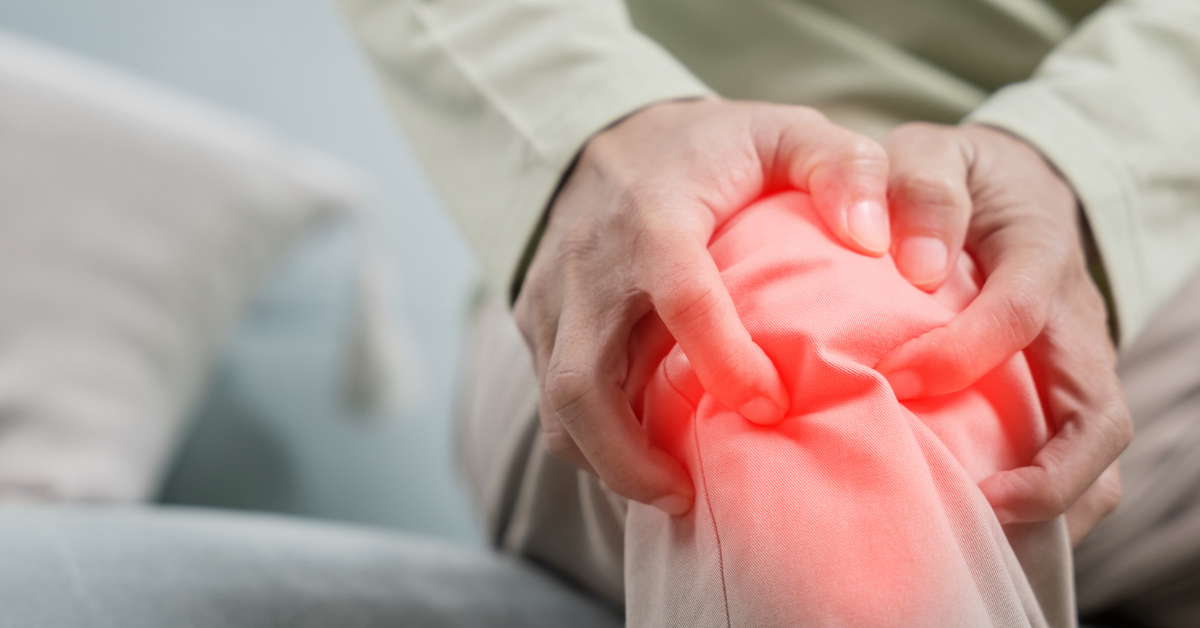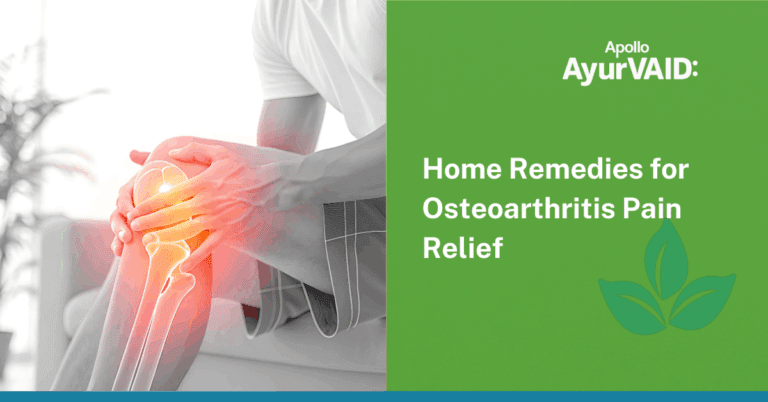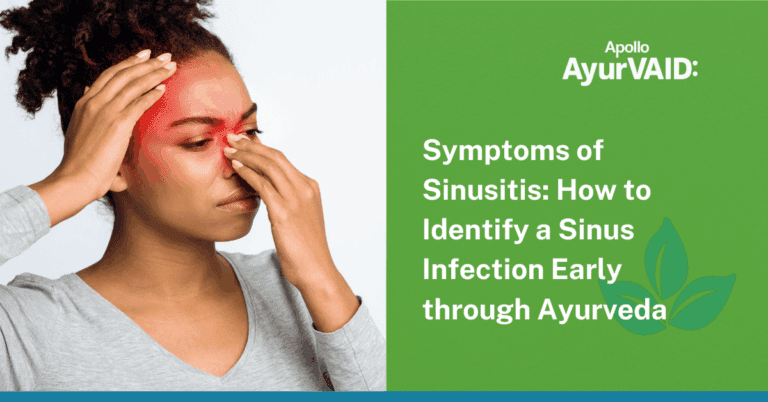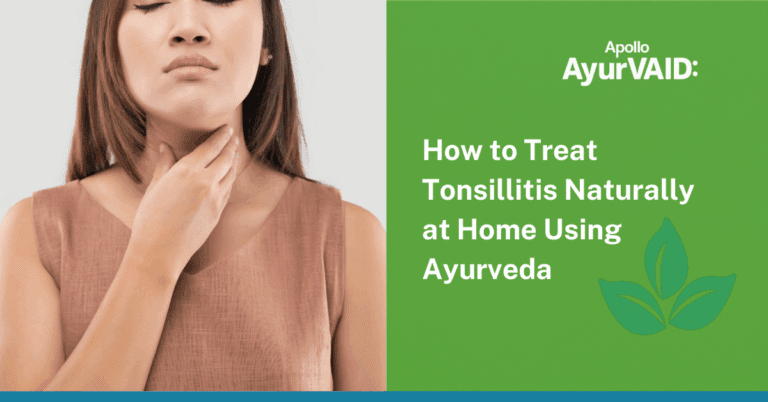Introduction
Osteoarthritis is a joint disease caused by the slow destruction of cartilage and surrounding tissues. The most commonly affected areas are the knees, spine, hips, and hands. This condition is more common in elderly women and old people.
Osteoarthritis is called Sandhigata Vata as per Ayurveda. Sandhi means joints; Gata Vata means the dosha dislocation in the pathological site. The symptoms include pain, stiffness, and restricted range of movements. Home remedies are effective for early-stage. However, advanced stages require Ayurveda interventions to prevent progression and complications. In this blog, we will explore Ayurvedic remedies for osteoarthritis, Ayurvedic treatment for knee osteoarthritis, and home remedies for osteoarthritis alongside targeted exercises for knee osteoarthritis.

Ayurvedic treatment for knee osteoarthritis
Although osteoarthritis can affect any joint the most commonly affected is the knee. It is considered Janu Sandhigata Vata in Ayurveda. The disease is characterized by stiffness, crepitus, and pain during flexion and extension of single or bilateral knee joints. Its causes often include injuries, joint problems, genetic inheritance, and obesity. People with long-standing chronic conditions, weak immune systems, joint deformities, bone/muscle destruction, multiple comorbidities, and advanced age require these interventions.
The Ayurvedic treatment for knee OA comprises Panchakarma and other external therapies. Janu Vasti – oil retention over the knee, Lepa – medicated paste application, Churna Pinda Sweda – medicated powder poultice, Kashaya or Dhanyamla Dhara -pouring warm decoction over the site, Taila Dhara – pouring warm oil over the site, Ksheera Seka – pouring medicated milk over the site, etc. are some of the local modalities administered to alleviate the symptoms. Virechana (therapeutic purgation) and Vasti (enema) treatments are also utilized for nourishing the bone and bone marrow depending upon the disease stage, the willingness of the patient and bystander to take the treatment and the patient‘s condition. Comorbidities like obesity and diabetes are managed safely through treatments and dietary changes. Maintenance therapy, such as Rasayana (rejuvenating), is also prescribed to strengthen the joints and avoid future episodes of knee pain.
Apollo AyurVAID treatment for knee osteoarthritis
Apollo AyurVAID offers a protocol-driven approach for knee pain, combining Ayurveda medication, targeted therapies, and functional rehabilitation with personalized diet and lifestyle adjustments. This approach includes in-depth health assessments, comprehensive diagnostics, and Ayurveda-based treatment strategies. Our approach aims to reduce the inflammation, arrest disease progression, nourish the degenerated tissues, and prevent further complications and disease episodes.
The first stage involves anti-inflammatory measures, such as Lepa, Churna Pinda Sweda, Kashaya, and Snehapana, to manage acute symptoms and inflammation. The treatment duration is 7-8 days. Comorbidities, such as obesity and diabetes, are addressed during this stage, promoting faster recovery and preventing future disease episodes.
The next stage involves nourishing degenerated cartilage and bone through interventions like ghee, Abhyanga, Janu Basti, Taila Dhara, and Ksheera Seka. Yoga or Kala Basti is also used to nourish the bone and bone marrow. The treatment duration is 10 days.
After the acute condition is managed we aim to nourish bone and supporting structure. Rasayana (rejuvenating) medicines are given internally on an outpatient basis. Prevention involves dietary modifications and lifestyle changes. The duration of treatment may vary depending on the disease stage, severity, and comorbidity involved.
Let’s explore some home remedies that can enhance the outcomes of these treatments and prevent the deterioration of the conditions.
Home Remedies for Osteoarthritis
The following home remedies can be adopted to improve the health of the joint and surrounding tissues and prevent bone degeneration and pain episodes. These remedies can manage early-stage OA in individuals with strong immune systems without any associated disease and minimal structural damage.
- Warm massage with castor or gingelly oil over the affected joint reduces the crackling sound accompanied by pain.
- Hot fomentation with the help of a rock salt poultice can also relieve the pain
- Drinking adequate water keeps your body hydrated and helps in joint lubrication
- Including cumin, turmeric, ginger, pepper, garlic, hing, warm milk, ajwain (carom) seeds, etc. in diet are beneficial due to their anti-inflammatory, Vata alleviating properties
- Healthy fats like ghee, and gingelly oil in the diet are beneficial for joint health
- Raw vegetables, beans, potatoes, chana, etc. which provoke Vata should be avoided
- Follow a consistent daily routine, practice Pranayama to reduce stress, ensure adequate rest, and maintain a healthy body weight.
Exercises for Knee Osteoarthritis
Along with home remedies for Osteoarthritis, gentle exercises help strengthen the muscles and reduce stiffness. Physical activities that can be incorporated to ease the pain and other discomforts are mentioned below.
- Gentle stretching, swimming, walking, and cycling can be done in the early stages of OA.
- Modified weight-bearing workouts and physical therapy-guided movements are recommended in intermediate OA.
- Asanas like Bridge Pose and Child’s Pose are beneficial in an advanced stage of disease. Brisk walking, rubbing palms and placing them over the knees after walking, and avoiding jerky movements are also advantageous.
Planning personalized exercises, monitoring pain and joint responses, and avoiding high-impact activities help maintain joint mobility and prevent further damage. Following a proper diet and lifestyle recommended in Ayurveda can enhance its effectiveness.

Conclusion
Ayurveda provides comprehensive and natural remedies for OA and aims to manage joint pain, improving overall quality of life. By addressing the root cause, we ensure significant pain relief and improvement in joint functions. Incorporating the above recommendations given by Ayurveda can prevent future pain episodes and disease progression.
Remember, each person’s body is unique, and what works for one might not work for another. Always consult healthcare professionals and experienced Ayurveda practitioners to ensure healthy, sustainable, and complete recovery.
References
- Ebnezar, J et al. (2012). Effects of an integrated approach of hatha yoga therapy on functional disability, pain, and flexibility in osteoarthritis of the knee joint: a randomized controlled study. Journal of alternative and complementary medicine, 18(5), 463-72. https://doi.org/10.1089/acm.2010.0320
Gupta, H et al. (2024). Recommended Lifestyle Modification for Elderly Patients with Knee Osteoarthritis. International Journal of Health Sciences and Research. https://doi.org/10.52403/ijhsr.20240735
Kessler, C et al. (2022). Ayurveda in Knee Osteoarthritis—Secondary Analyses of a Randomized Controlled Trial. Journal of Clinical Medicine, 11. https://doi.org/10.3390/jcm11113047
Meena, J et al. (2023). UNLOCKING THE ANCIENT WISDOM: AYURVEDIC SECRETS FOR MANAGING SANDHI VATA (OSTEOARTHRITIS) International Ayurvedic Medical Journal. https://doi.org/10.46607/iamj3911082023
Patil, S S, Rangnekar, S S (2022). A review on ayurvedic management of Sandhivata with respect to Osteoarthritis. World Journal of Advanced Research and Reviews. https://doi.org/10.30574/wjarr.2022.16.2.1233






